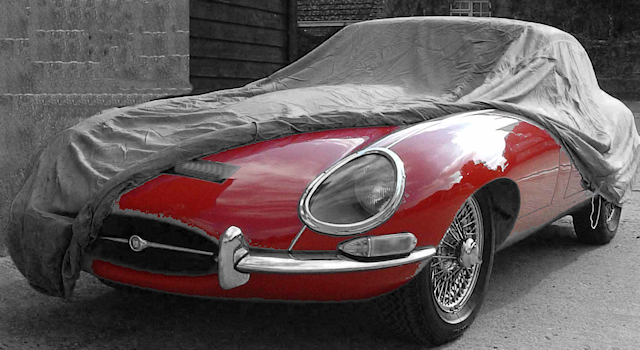Preparation and correct procedure will avoid many a probem when you take the car back out of storage.
Storing your car over the winter period needs careful consideration. A car should be stored in a dry, condensation-free garage.
- Ensure that the boot is clean and dry, The boot seal is rarely perfect and some moisture can collect and condense in the inner wheel arches and floor.
- Air it out well for a day or so, then place a desiccant sac (you know the silicon gel packs you get in boxes with say, a power drill or a television) in here before closing it up.
- Change the engine oil. Dirty oil is contaminated with acids and water that can cause premature bearing failure and rust inside the engine.
- Make sure the Brake and Clutch master cylinders are full of brake fluid. Brake fluid can absorb water very quickly.
- By reducing the exposed surface area of the fluid, the water absorption can be reduced. If you can, bleed the brake and clutch systems.
- Throw a blanket or two over the entire car but only after you’ve washed it and waxed your classic car properly, protecting any chromework with a thin layer of wax or, alternatively, a quick wipe over with an oily rag, although the latter can attract dust in a dusty environment.
- Give the car a very thorough wash (dont forget underneath!) and valeting. Give it a good vacuuming, don’t forget the boot either!
- If your old car is lucky enough to have leather trim, now is a good time to give it a careful clean and going over with a quality hide food to preserve the longevity of your trim. Neglect to look after leather seats and door panels can lead to premature cracking and splitting, especially around the seams which, when cleaned, mustn’t be left to get too wet as they can rot in time.
- Is it worth jacking your car up or not. If its going to be laid up for say 4+ months then resting the car on some stands (not old bricks or blocks of wood either!) may be beneficial, but if its just for the winter, the car can be left sat on its wheels, provided the tyres are pumped up say 5-10 psi higher than normal, to prevent the tyres getting any flat spots. A sheet over the tyres is not a bad idea either to cut down on any sunlight getting through and possibly affecting the rubber in some way.
- Double check the antifreeze, and replace with a mix using quality antifreeze, mixed up to a %age strength depending on the climate you are in.
- A few drops of oil into each bore, then turn the engine by hand or on the handle, should prevent the pistons seizing in the cylinder bores too. Some people recommend putting a block of wood on the clutch pedal, to prevent the clutch seizing whilst a car is laid up.
- Make sure the handbrake isn’t left on, as that can seize easily.
- Turning the engine over manually is a good move, which should ensure that nothing seizes in that department.
- Batteries like to be exercised, or else they tend to lose efficiency. Try to use the battery on your winter car if you can, or else cycle it through charge ups, and gradual discharge or buy a trickle charger.
- It might be beneficial to advise your insurers that the car is laid up, it could result in a reduction in premium for the months of the policy that the car is out of use needing Laid Up cover only .. check with your insurers to find out what they can do in this respect!




















